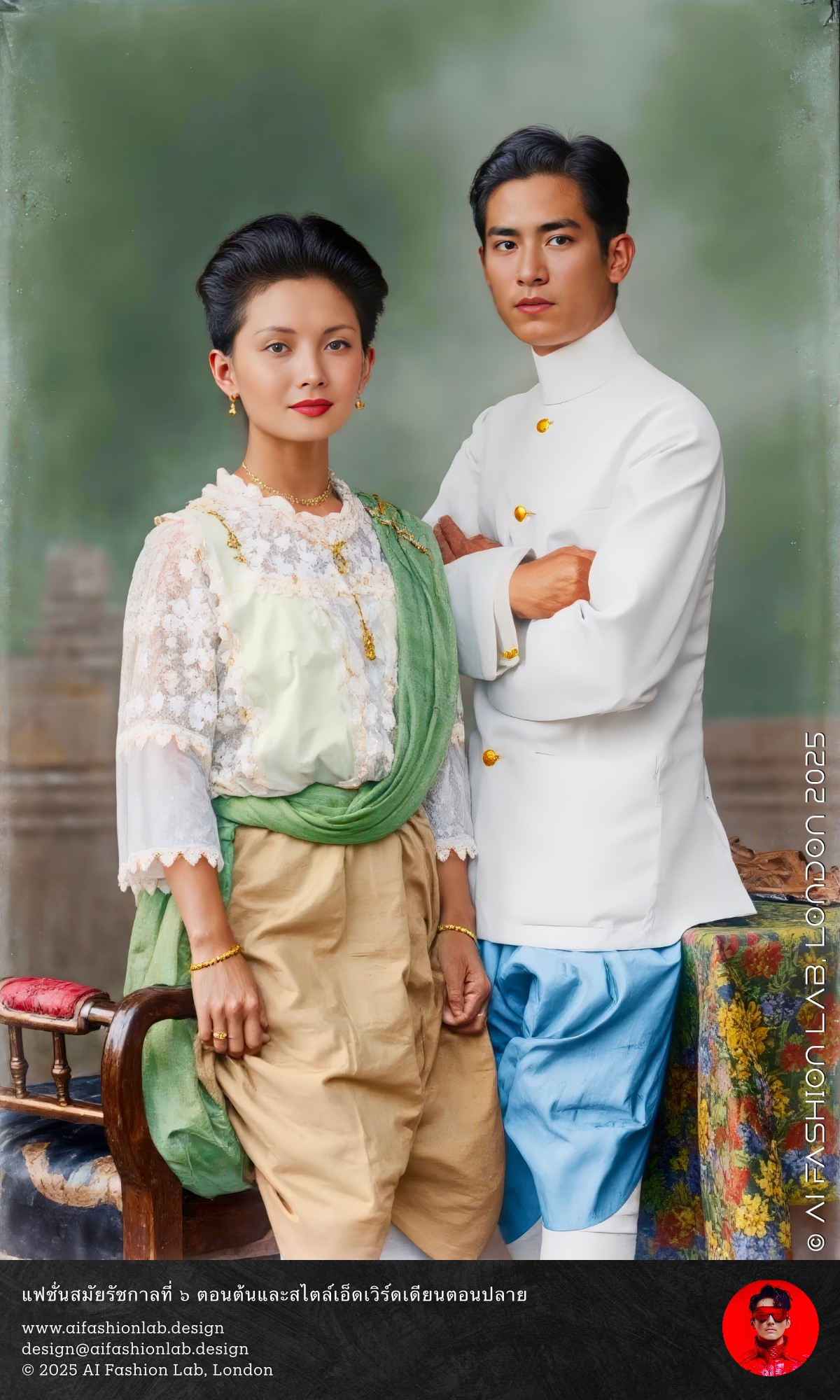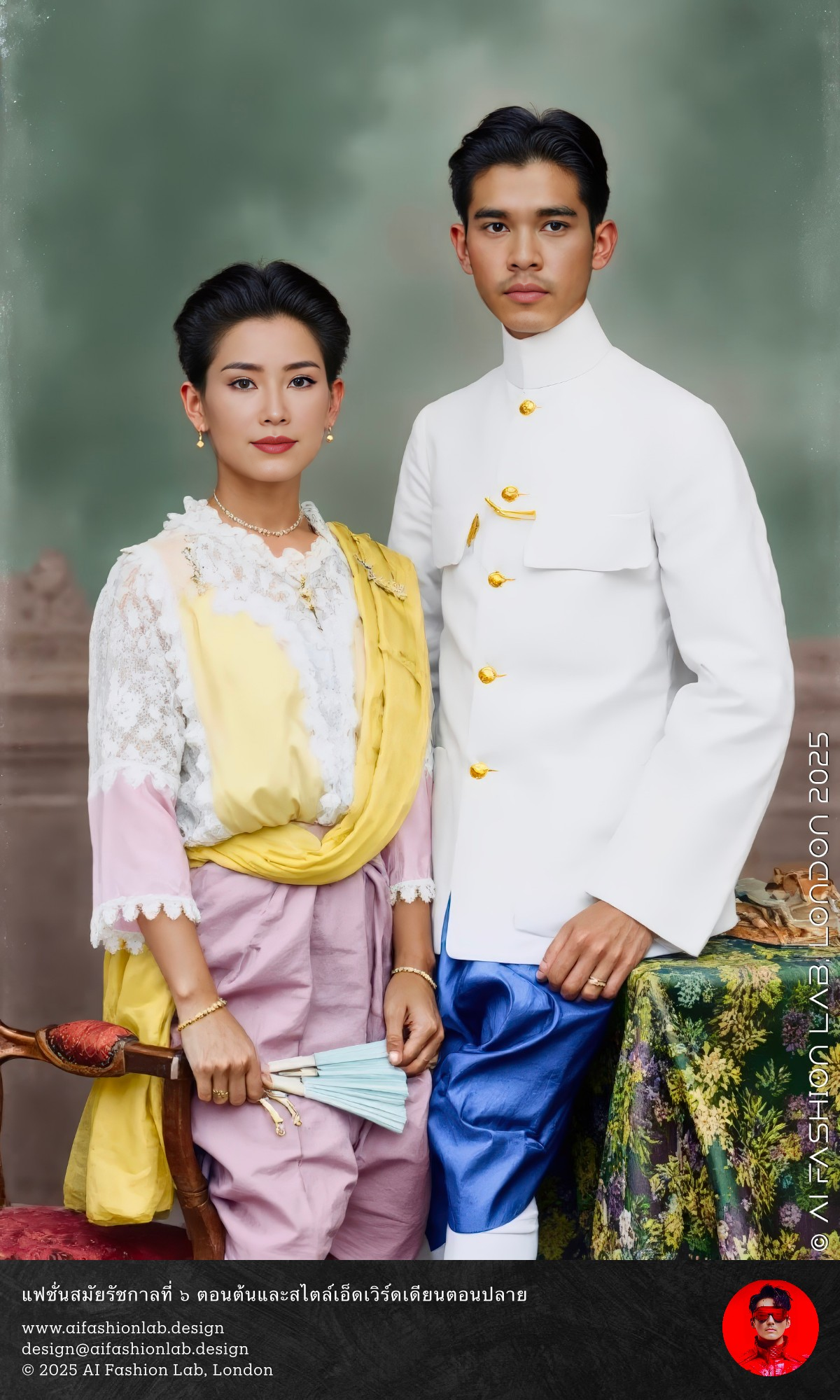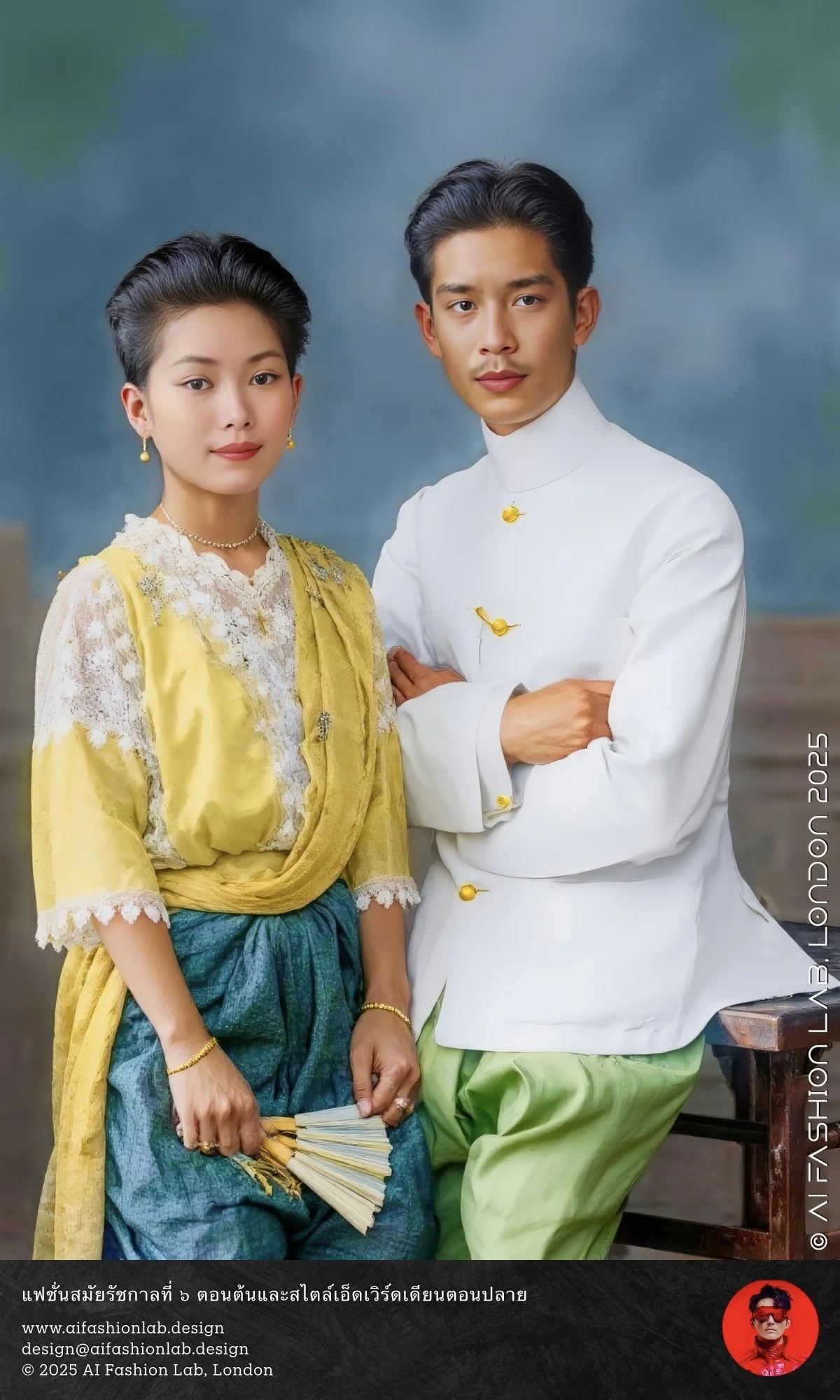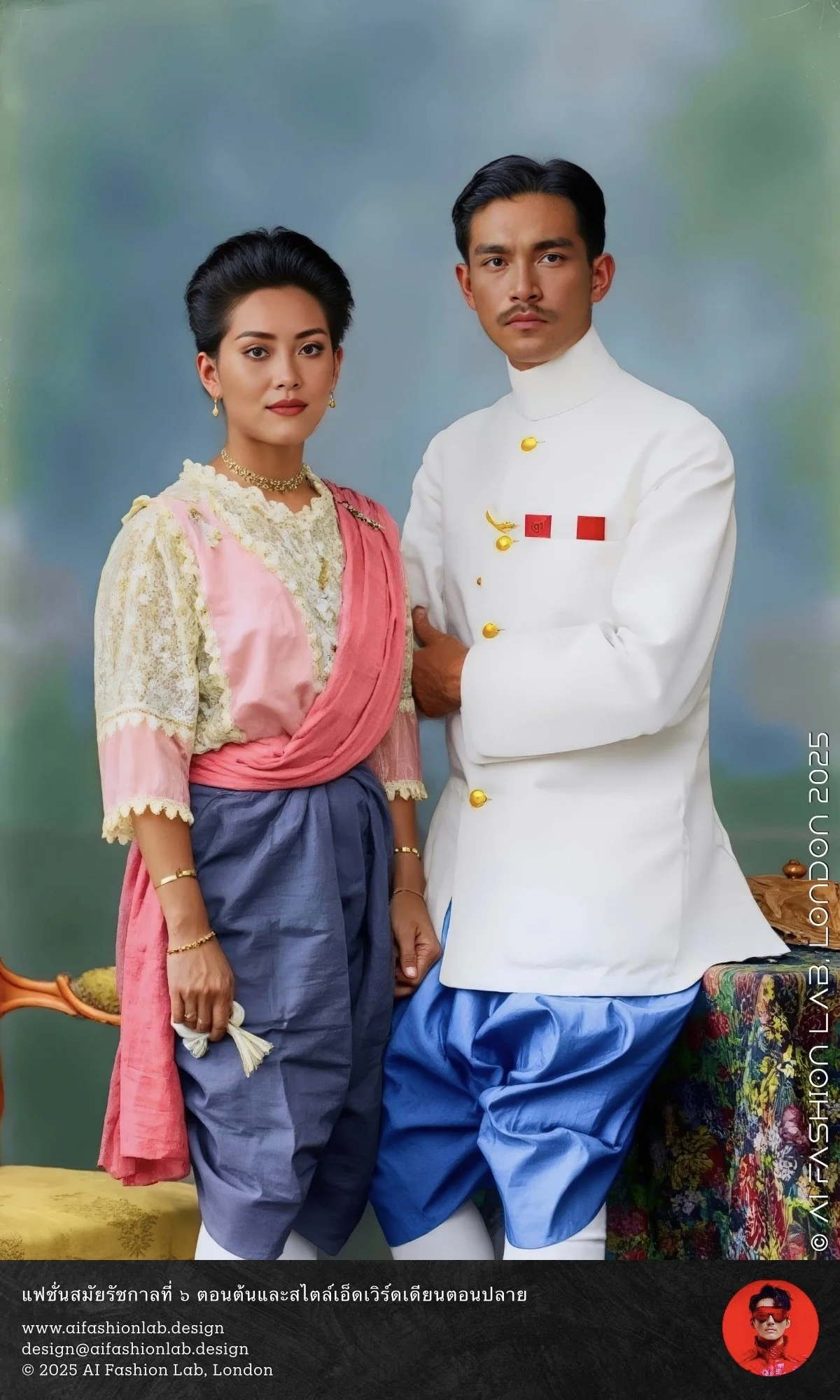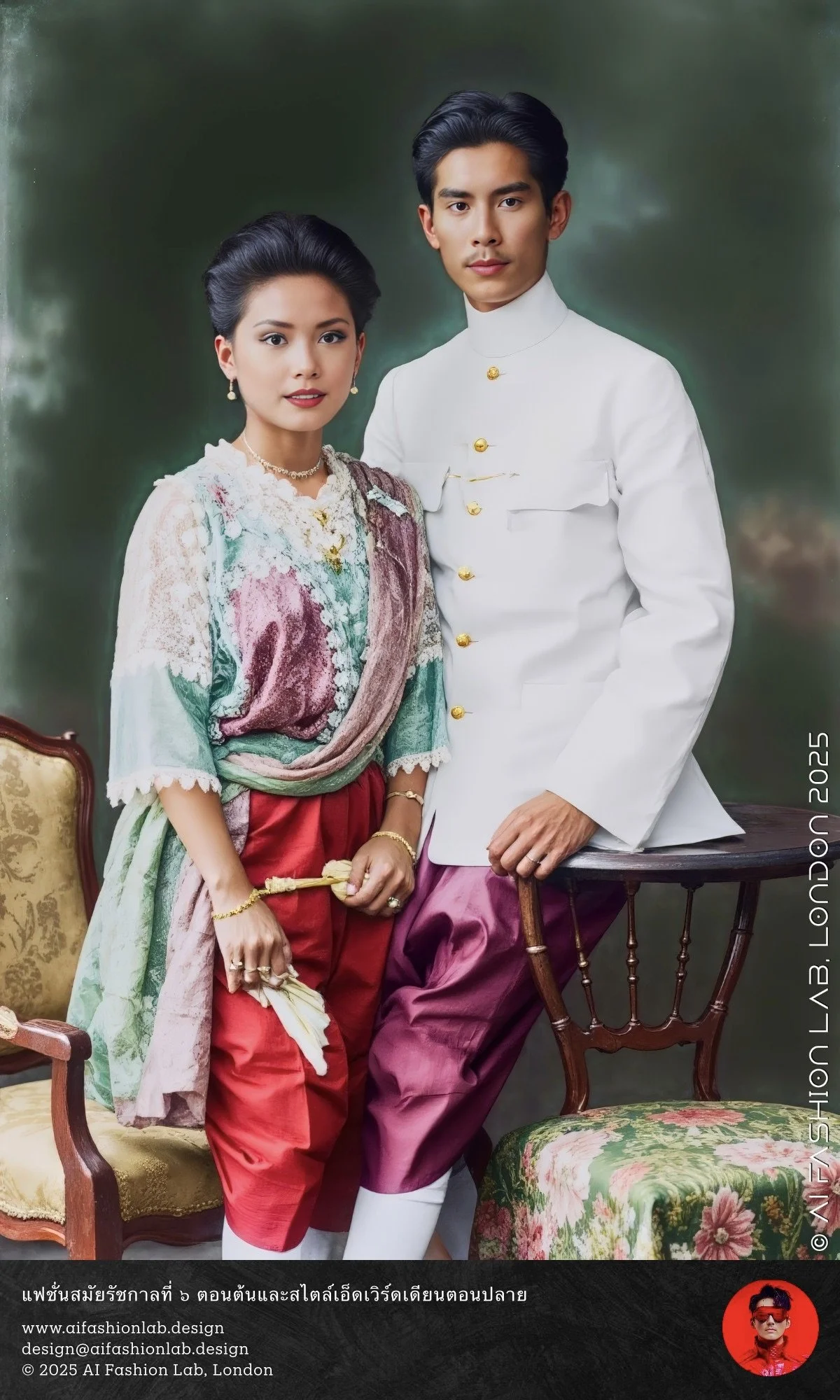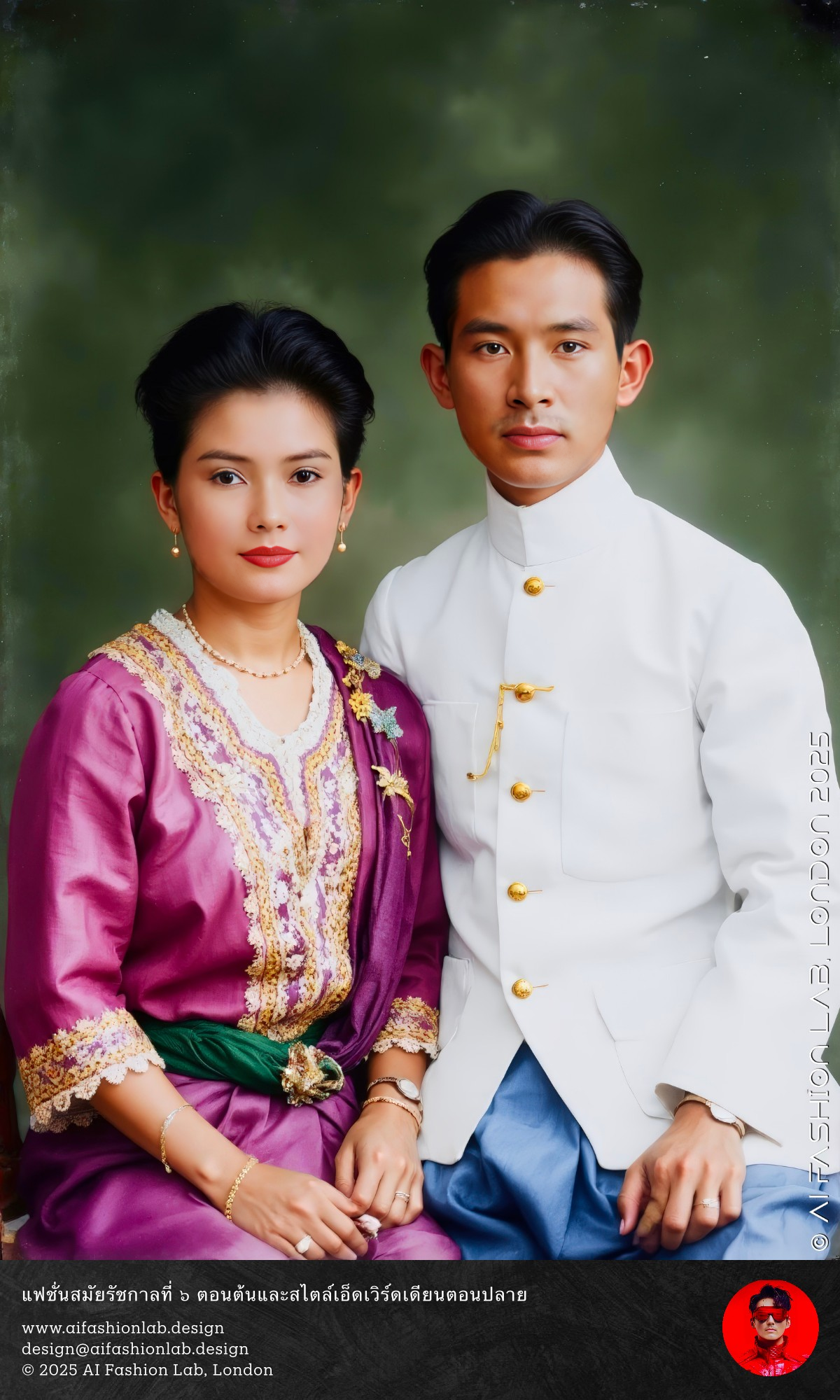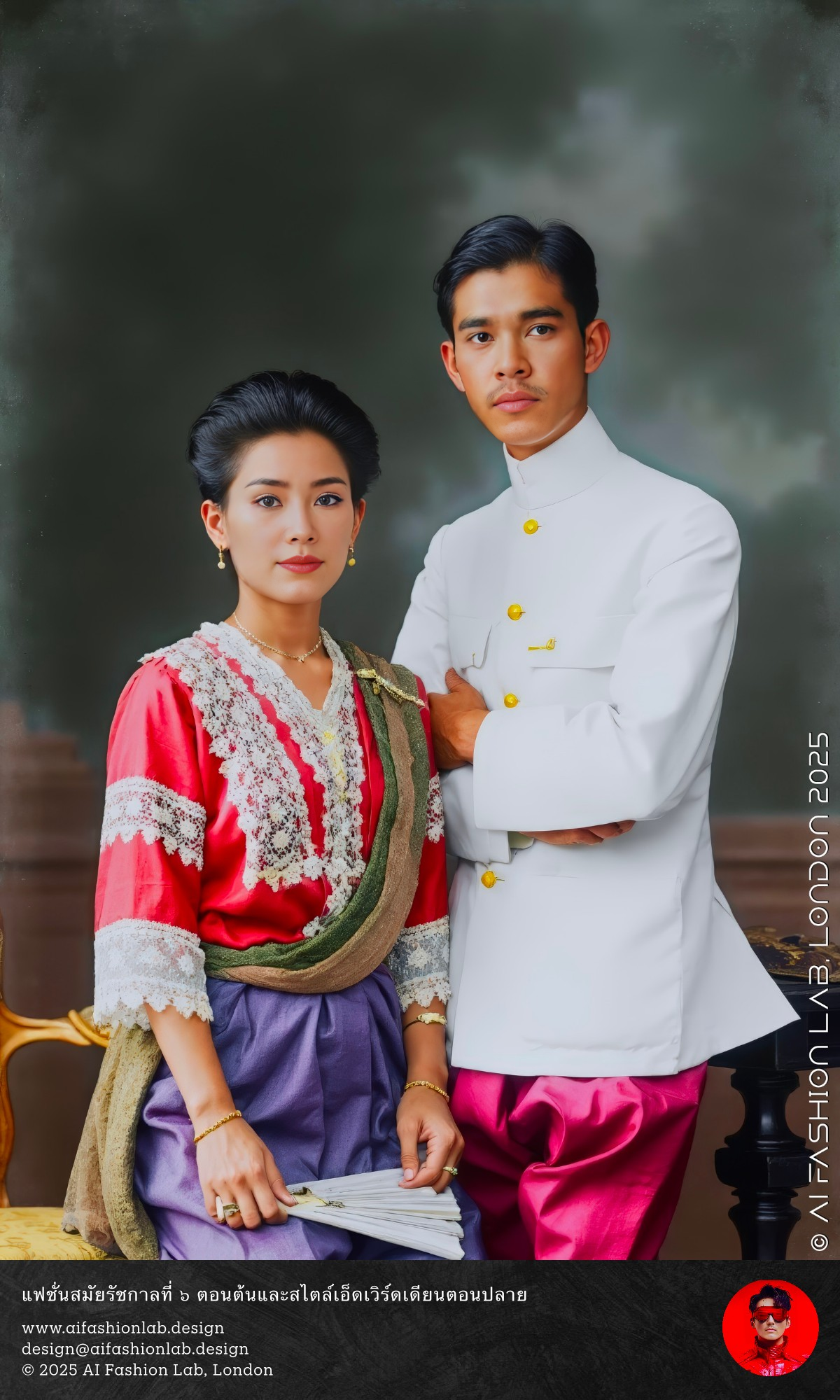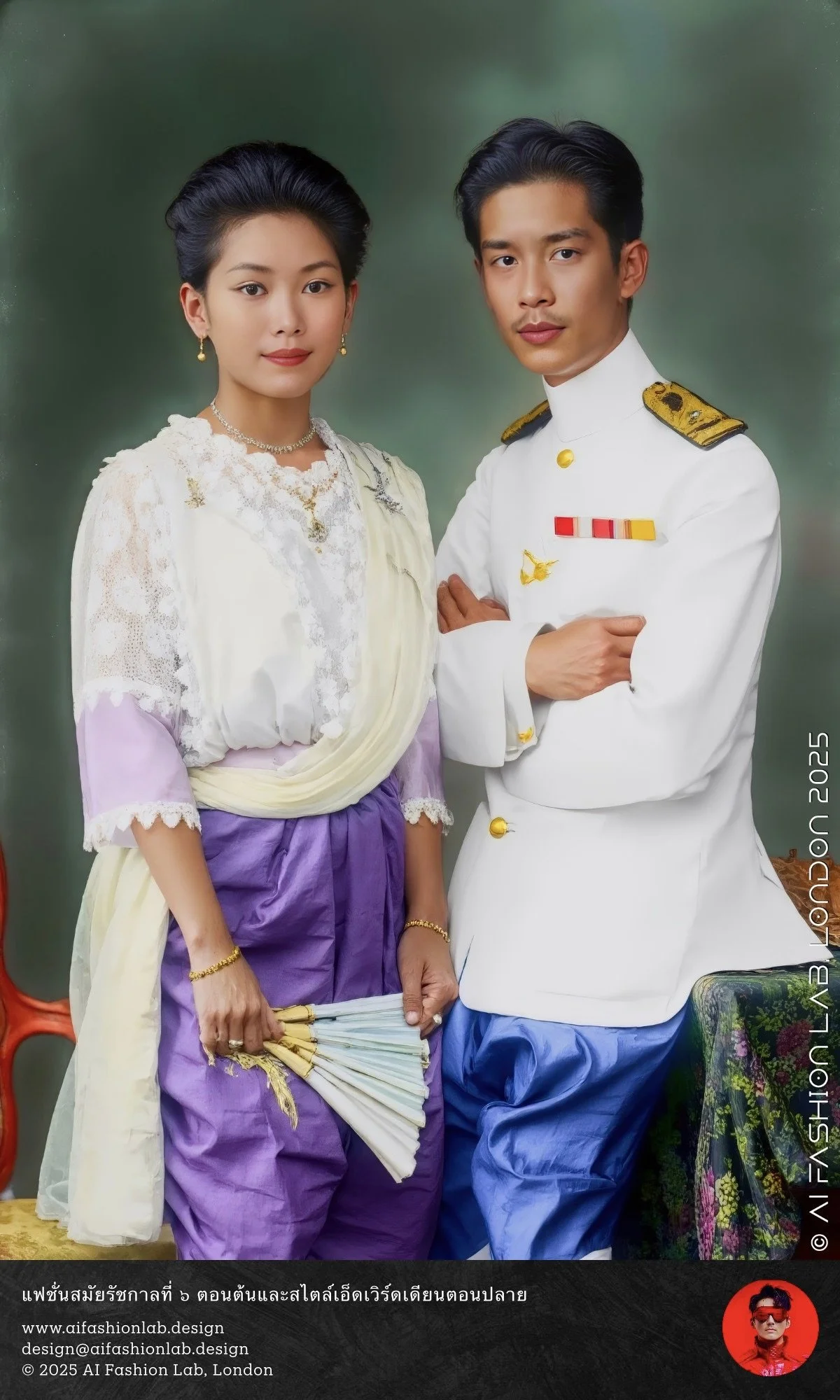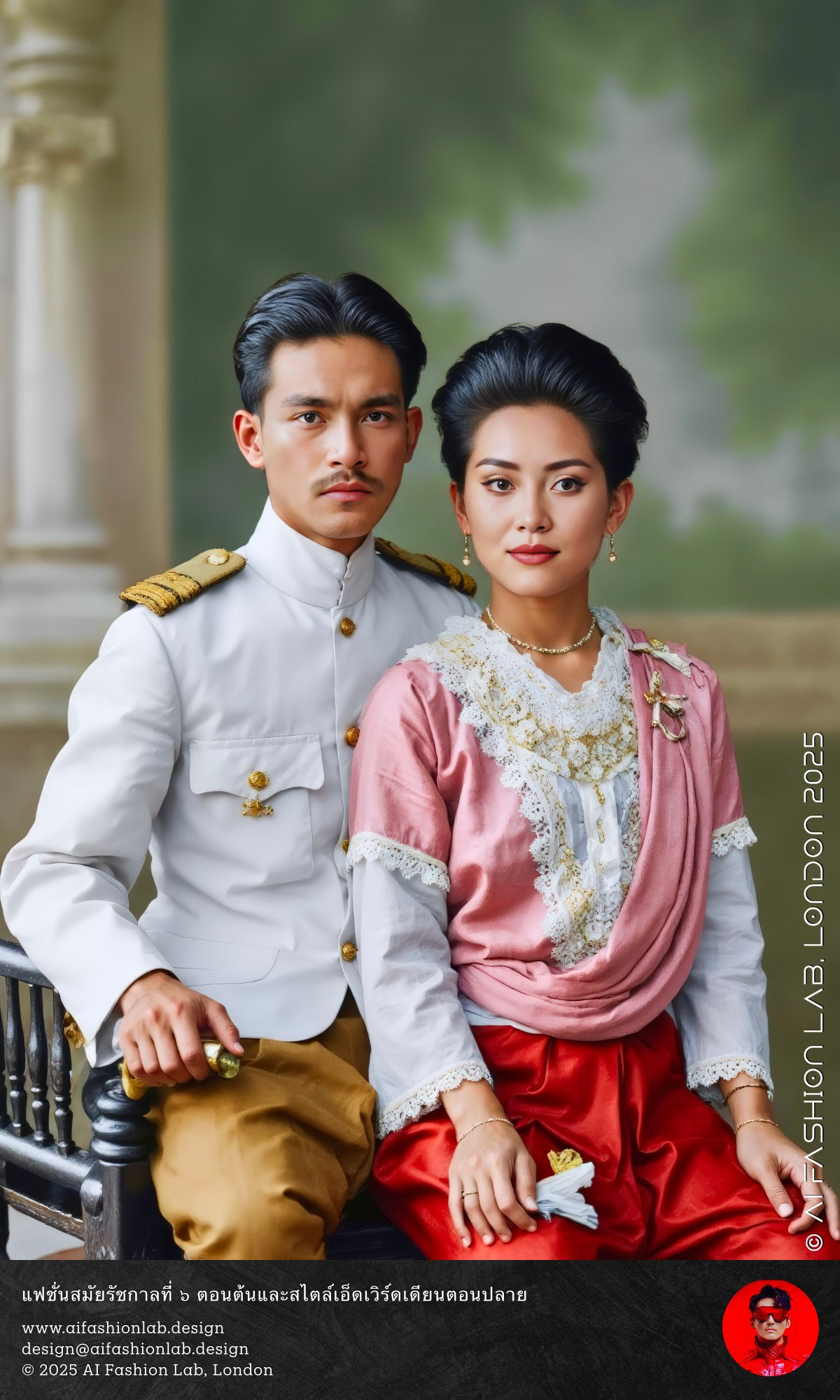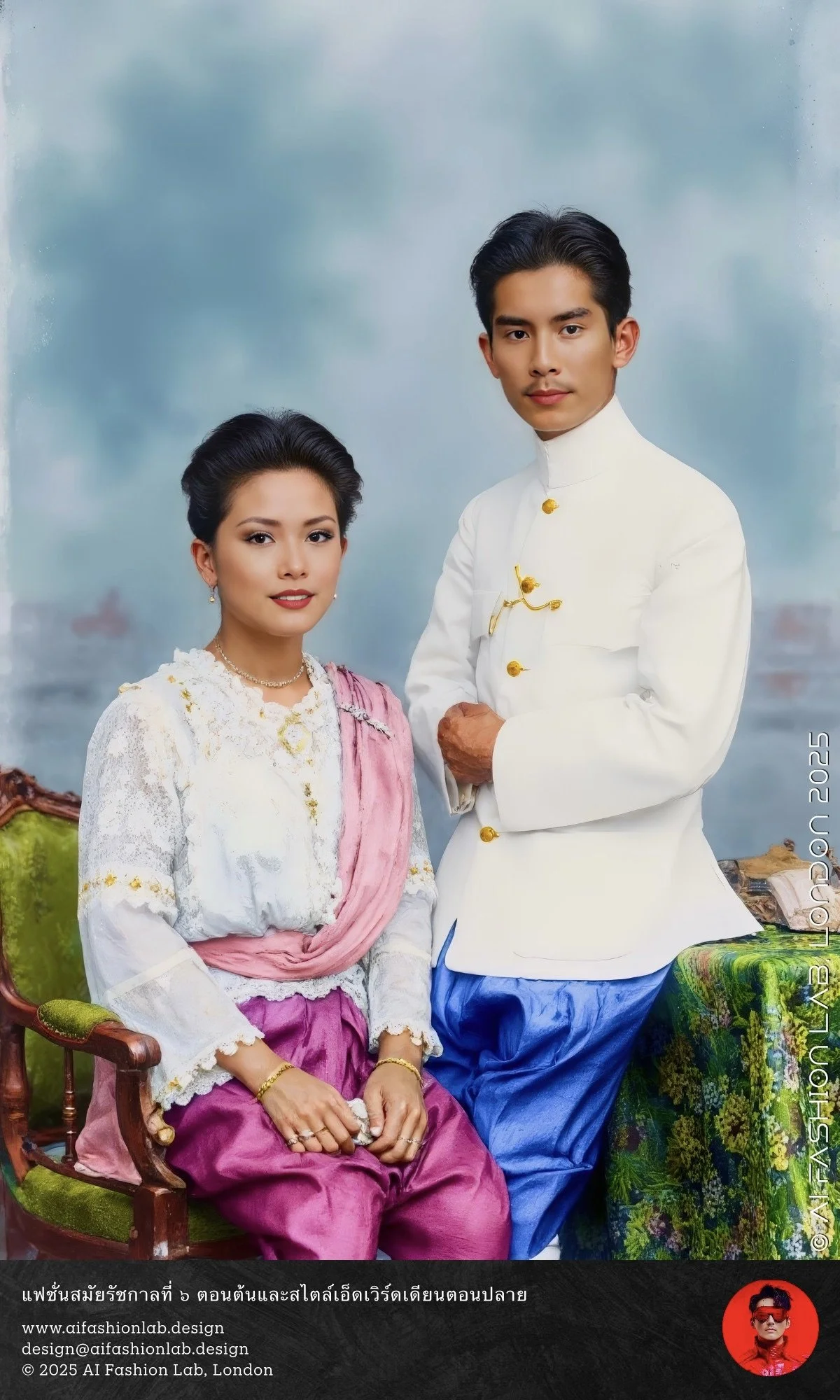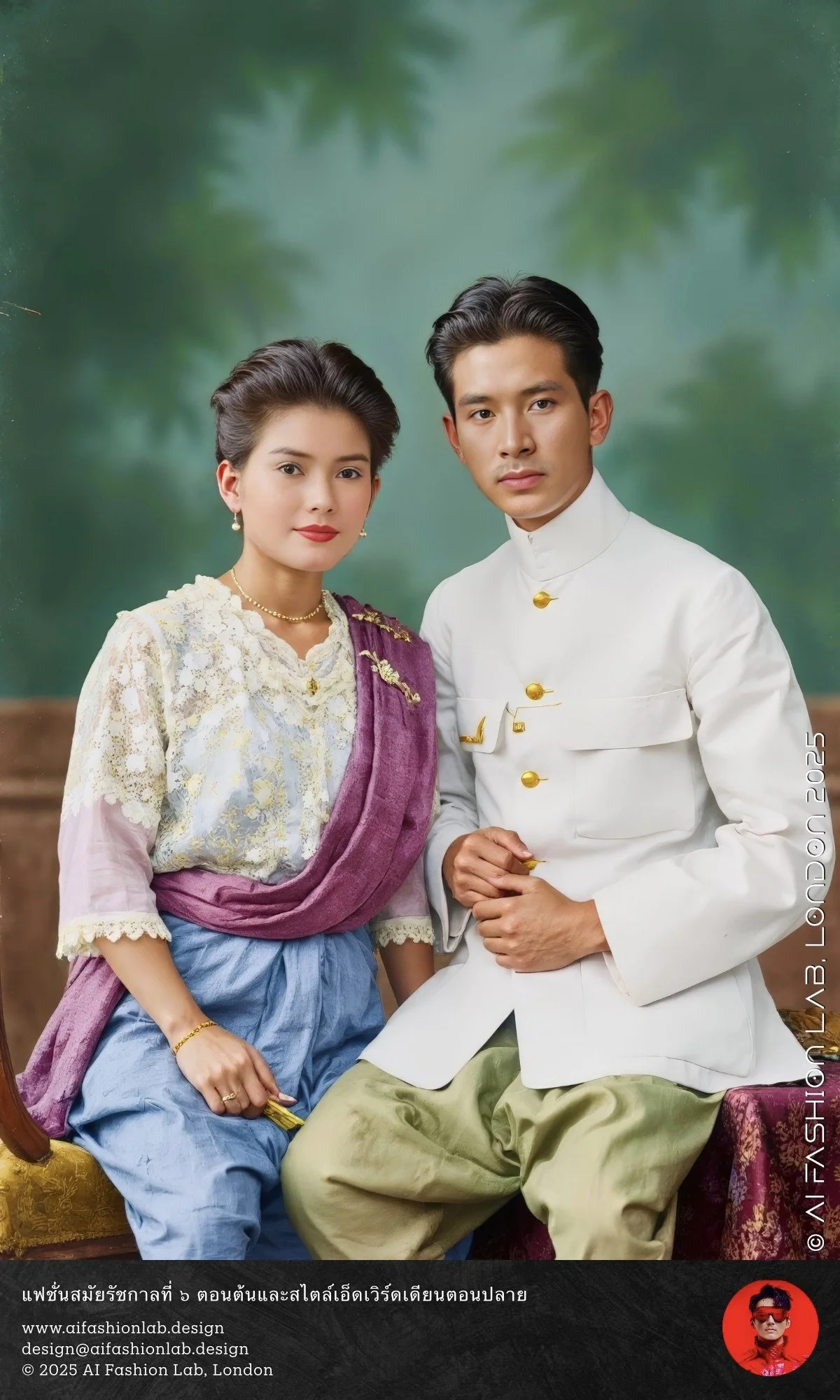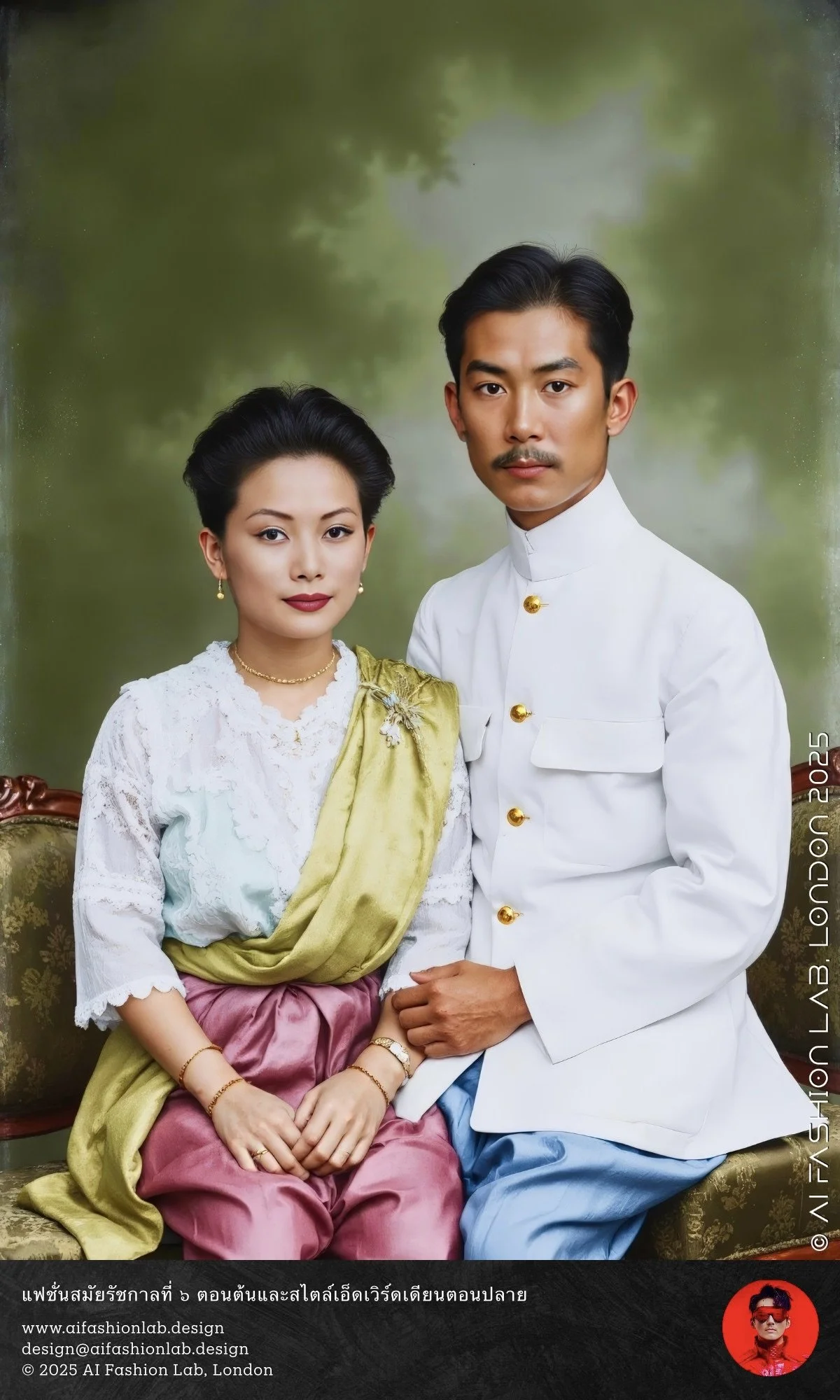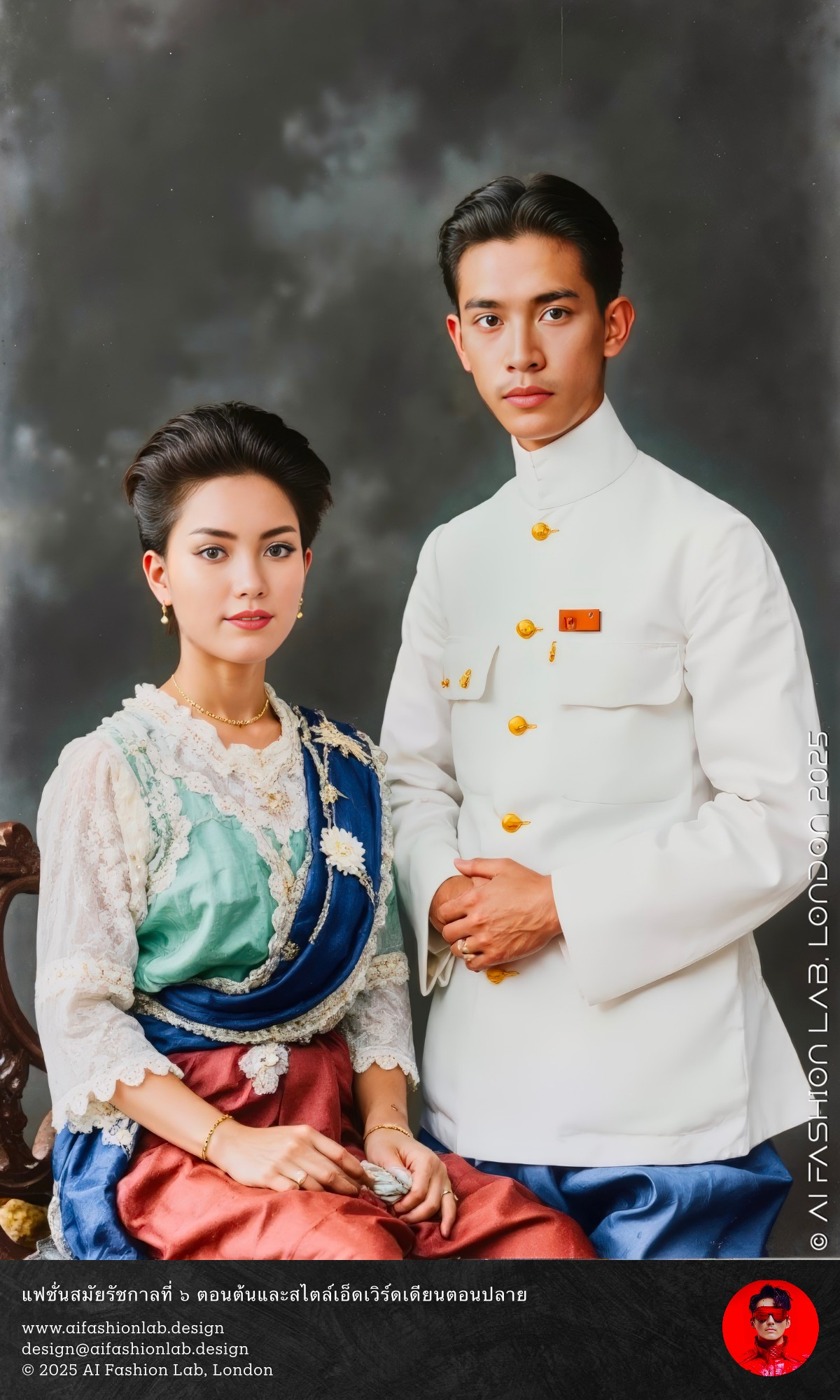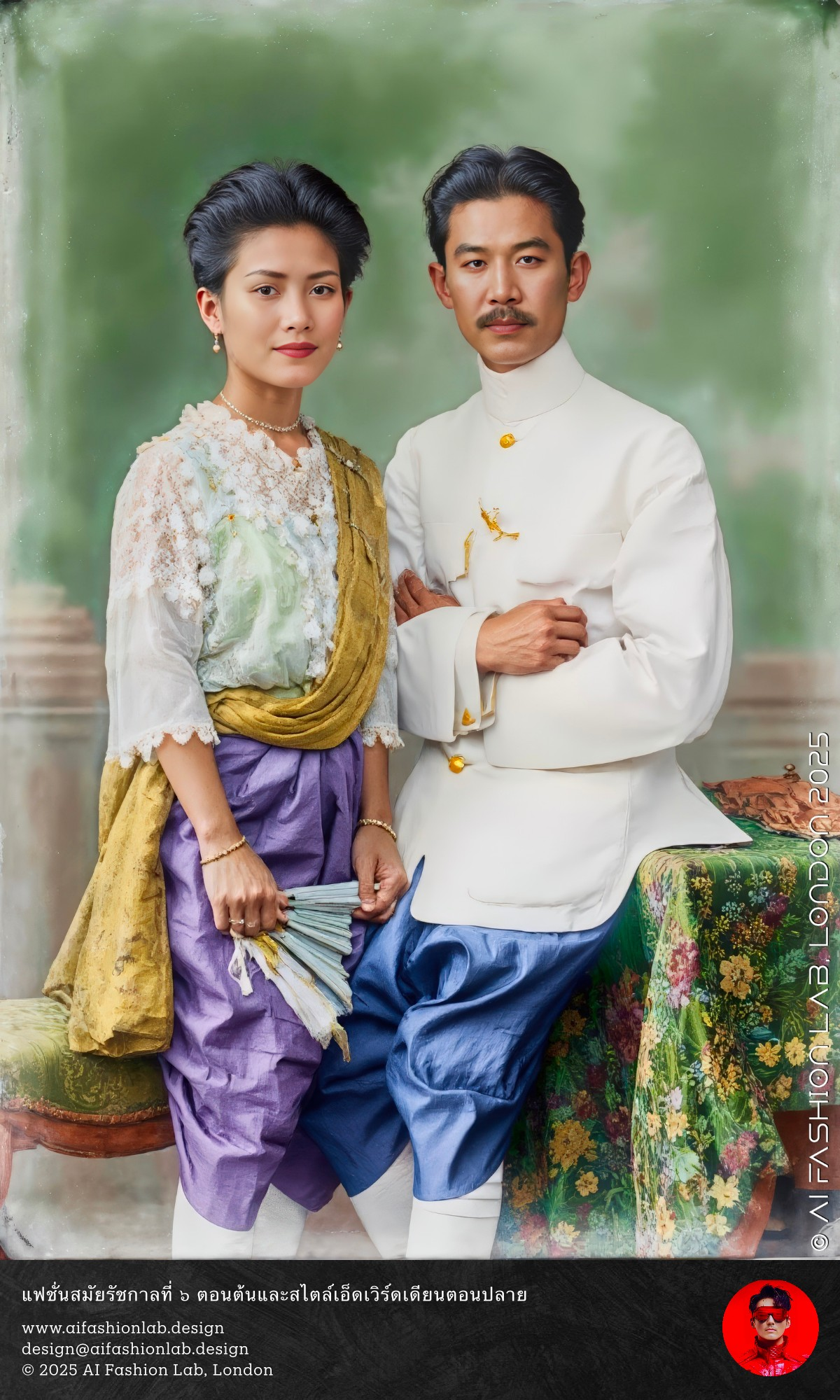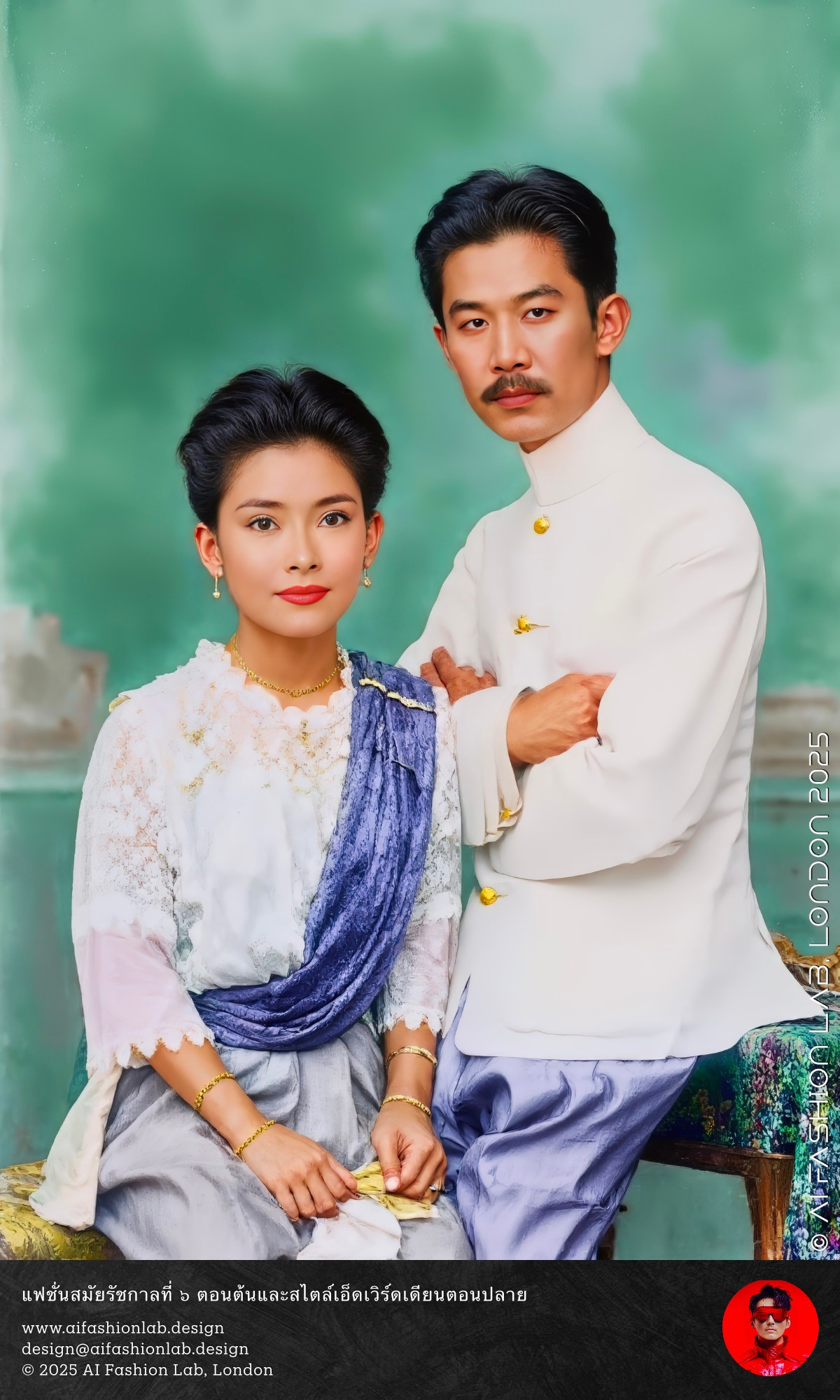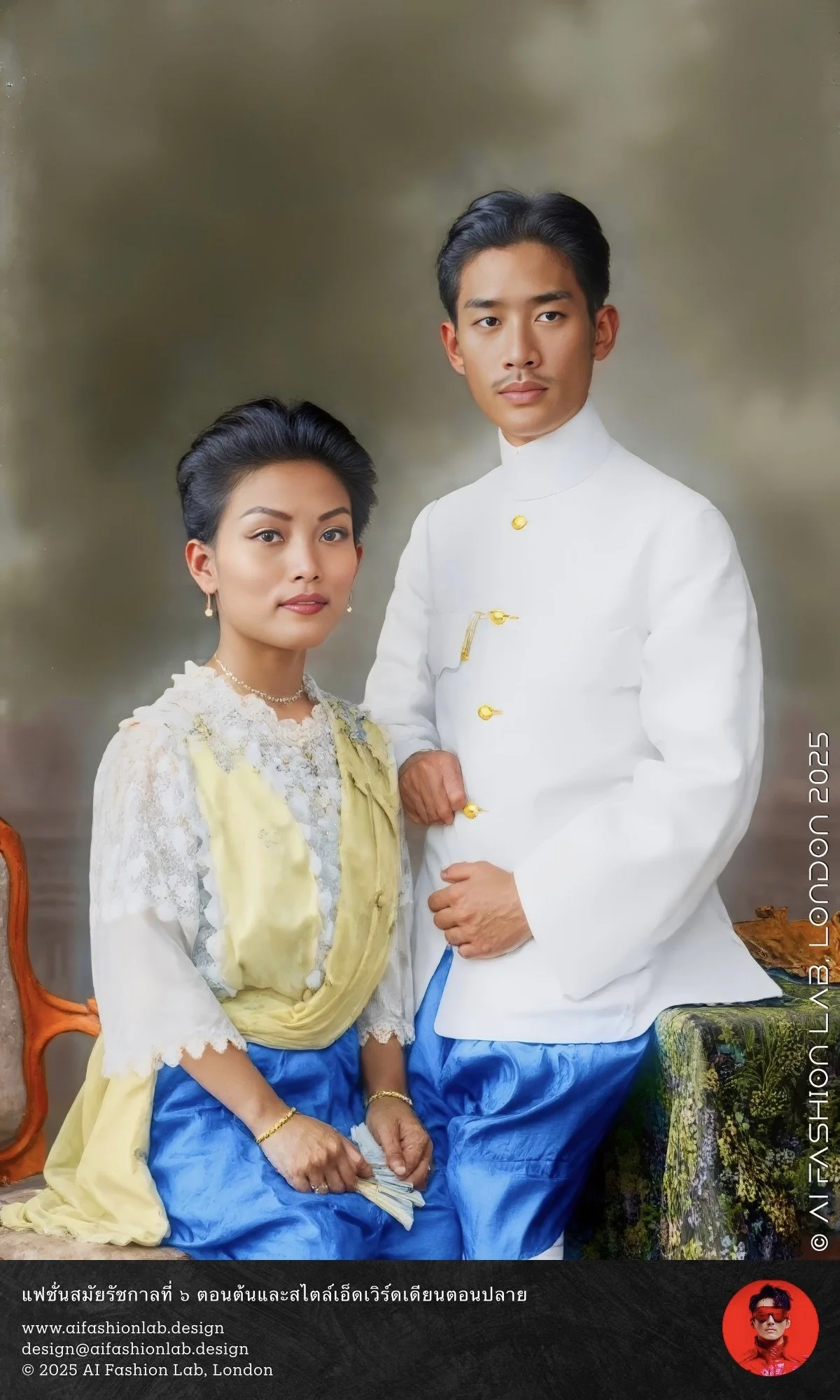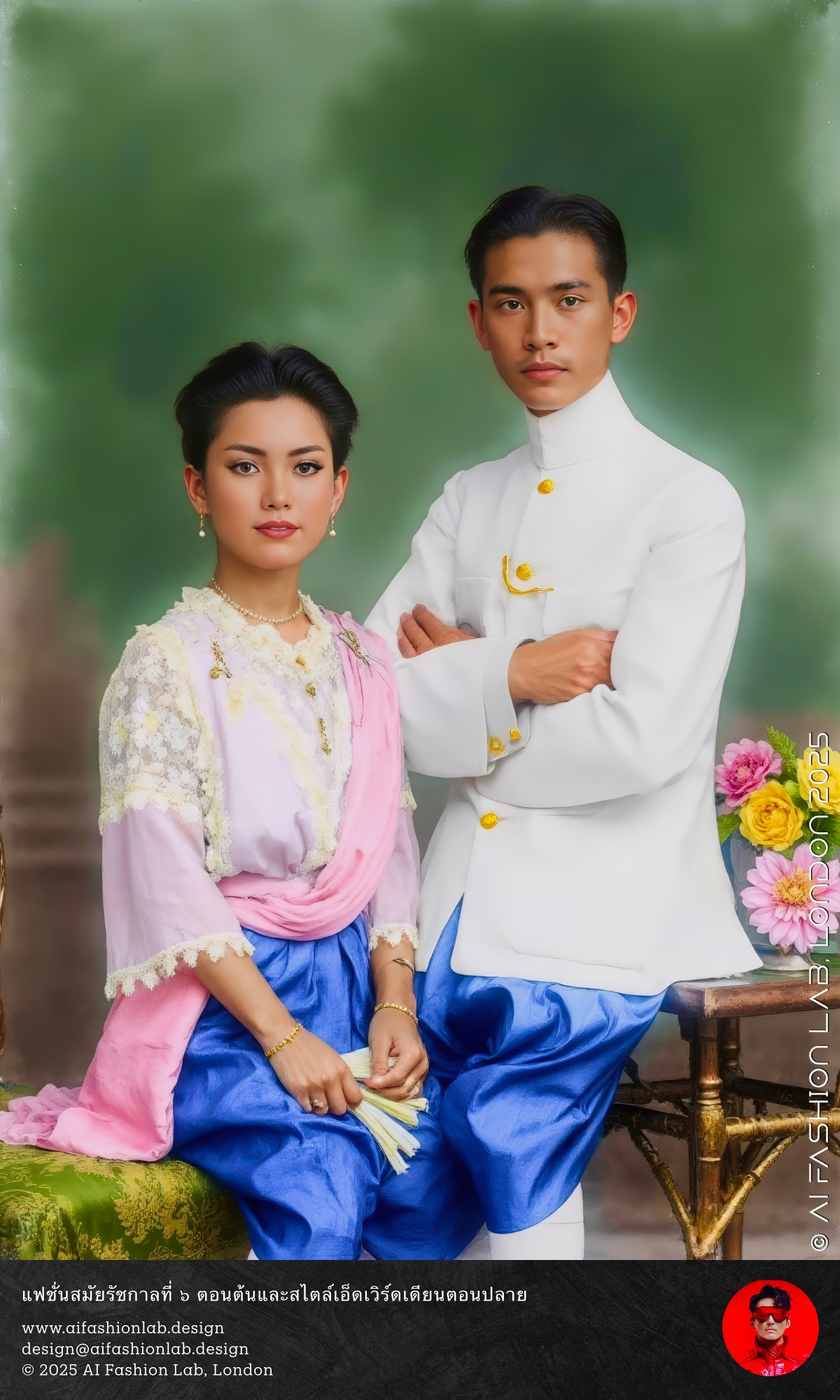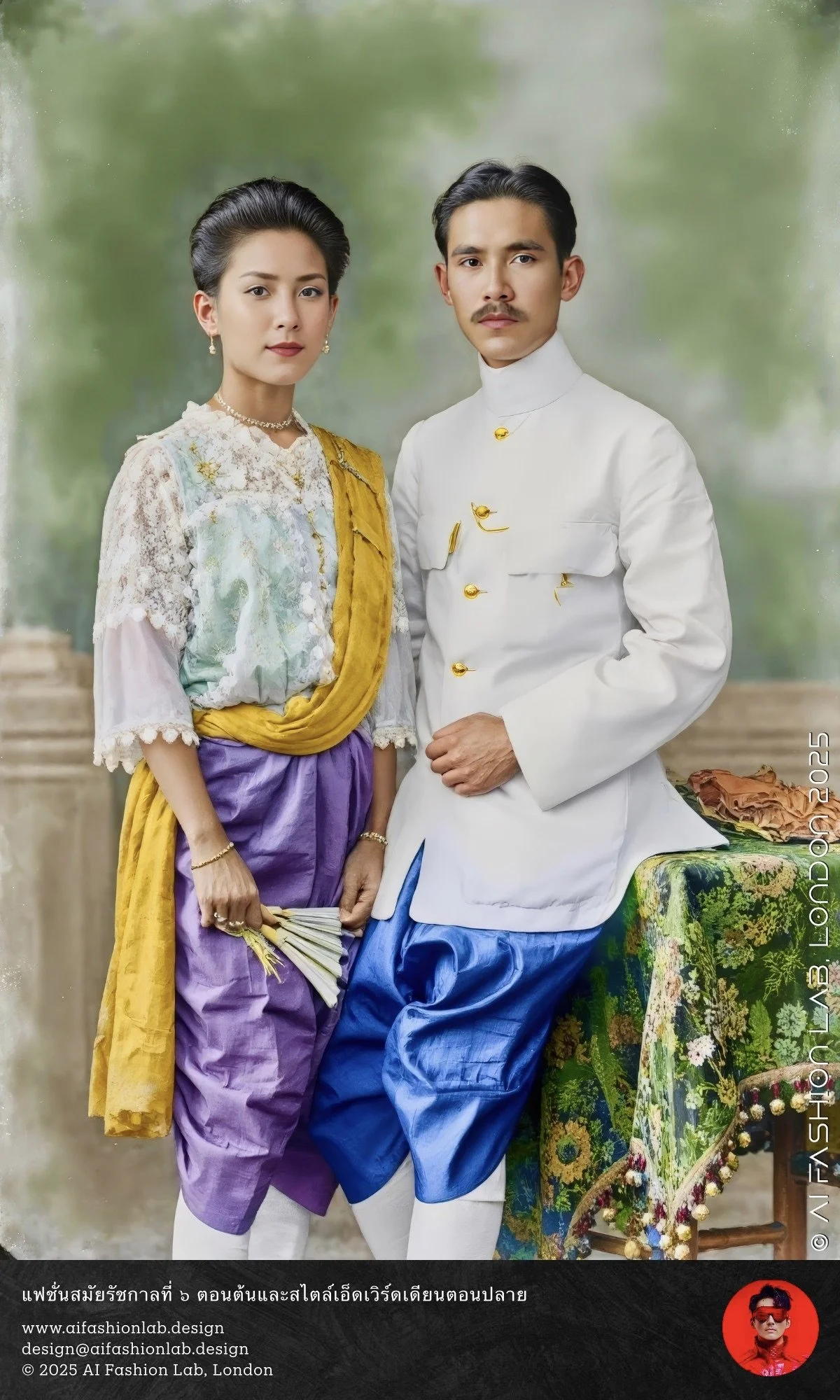แฟชั่นสมัยรัชกาลที่ ๕ ตอนปลายและสไตล์เอ็ดเวิร์ดเดียน: อิทธิพลต่อการแต่งกายสตรีสยามต้นศตวรรษที่ 20
แฟชั่นสมัยรัชกาลที่ ๕ ตอนปลายและสไตล์เอ็ดเวิร์ดเดียน: อิทธิพลต่อการแต่งกายสตรีสยามต้นศตวรรษที่ 20
ในช่วงทศวรรษ 1910 แฟชั่นของสตรีชาวตะวันตกได้เปลี่ยนจากเสื้อคอสูงไปเป็น เสื้อคอกว้างประดับลูกไม้และแขนสามส่วน ซึ่งให้ความสบายและความอ่อนช้อยมากขึ้น เสื้อประเภทนี้เป็นที่รู้จักกันในชื่อ "lingerie blouse" มักทำจากผ้ามัสลินหรือผ้าฝ้ายที่มีลวดลายปักละเอียดอ่อนและจีบเล็ก ๆ ความงดงามที่ดูเบาสบายของเสื้อประเภทนี้ส่งอิทธิพลไปทั่วโลก รวมถึงในสยาม ซึ่งสตรีได้นำมาประยุกต์เข้ากับเครื่องแต่งกายแบบดั้งเดิมของตน
สตรีสยามนิยมตัดผมสั้นมาตั้งแต่ต้นกรุงรัตนโกสินทร์ ซึ่งแตกต่างจากสตรีตะวันตกที่มักเกล้าผมสูงและจัดแต่งทรงอย่างประณีต ทรง "ดอกกระทุ่ม" ซึ่งได้รับความนิยมตั้งแต่กลางศตวรรษที่ 19 เนื่องจากดูแลรักษาง่ายและเหมาะกับภูมิอากาศร้อน เมื่อเข้าสู่ช่วงทศวรรษ 1910 ทรงผมสั้นนี้เข้ากันได้อย่างลงตัวกับเสื้อคอลูกไม้ที่ดูเบาสบาย ช่วยเสริมลุคที่ทันสมัยและงดงามในแบบฉบับของหญิงสยาม
แทนที่จะรับเอาเครื่องแต่งกายตะวันตกมาโดยตรง สตรีสยามได้นำเสื้อสไตล์เอ็ดเวิร์ดเดียนมาสวมคู่กับโจงกระเบน ซึ่งเป็นผ้านุ่งแบบดั้งเดิมของไทย การผสมผสานนี้ทำให้ได้ลุคที่ผสมระหว่างความโก้หรูแบบตะวันตกและอัตลักษณ์ไทย เสื้อผ้าที่โปร่งเบาเข้ากับสภาพอากาศร้อนชื้นได้ดี ขณะที่ลวดลายลูกไม้และงานปักก็สะท้อนถึงความประณีตของสิ่งทอไทย ทำให้แฟชั่นนี้กลายเป็นเอกลักษณ์ของสตรีชั้นสูง
ภาพแฟชั่น AI ในรัชสมัยพระบาทสมเด็จพระจุลจอมเกล้าเจ้าอยู่หัว (รัชกาลที่ ๕ ตอนปลาย) แสดงให้เห็นแฟชั่นผสมผสานนี้อย่างชัดเจน หญิงสาวในชุดเสื้อคอประดับลูกไม้ที่ดูพลิ้วไหว สวมคู่กับโจงกระเบนและเครื่องประดับทอง ทรงผมสั้นช่วยขับเน้นลวดลายของเสื้อผ้าให้โดดเด่น สร้างสไตล์ที่งดงามแบบร่วมสมัย ขณะเดียวกันก็ยังคงเอกลักษณ์ของชาติไว้ได้อย่างสมบูรณ์
อิทธิพลของแฟชั่นสไตล์เอ็ดเวิร์ดเดียนต่อ เครื่องแต่งกายสตรีสยามในต้นศตวรรษที่ 20 คือการผสมผสานระหว่างความทันสมัยและความเป็นไทย แม้ว่าเสื้อตะวันตกจะเข้ามาเปลี่ยนรูปแบบการแต่งกาย แต่ ทรงผมดอกกระทุ่มและโจงกระเบน ยังคงสะท้อนถึงรากเหง้าทางวัฒนธรรม ความกลมกลืนของสองวัฒนธรรมนี้ทำให้เกิดแฟชั่นที่เป็นเอกลักษณ์ ซึ่งเป็นสัญลักษณ์ของสตรีชั้นสูงในยุคต้นรัตนโกสินทร์ตอนปลายและต้นศตวรรษที่ 20
Late King Rama V Era Fashion and Edwardian Style: Influence on Siamese Women’s Attire in the Early 20th Century
During the 1910s, Western women’s fashion shifted from high-necked blouses to wide-neck blouses adorned with lace and featuring three-quarter sleeves, offering greater comfort and a softer, more graceful silhouette. These garments, known as “lingerie blouses,” were typically made of muslin or cotton with delicate embroidery and fine pintucks. Their light and airy elegance spread worldwide, including to Siam, where women incorporated the style into their own traditional attire.
Siamese women had favoured short hairstyles since the early Rattanakosin period, in contrast to Western women who often arranged their hair in tall, intricate updos. The “dok krathum” style, popular since the mid-19th century, was easy to maintain and suited the tropical climate. By the 1910s, this short hairstyle harmonised perfectly with the light, lace-trimmed blouses, enhancing a modern yet distinctively Siamese feminine look.
Rather than adopting Western dress in full, Siamese women paired Edwardian-style blouses with jong kraben, the traditional Thai wrap-around garment. This fusion created a sophisticated blend of Western elegance and Thai identity. The lightweight, breathable fabrics were ideal for the humid climate, while the lace and embroidery resonated with the intricate craftsmanship of Thai textiles. As a result, this hybrid fashion became the hallmark of elite women.
AI-generated fashion images of the late reign of King Chulalongkorn (King Rama V) vividly portray this fusion. Young women are shown wearing airy, lace-adorned blouses paired with jong kraben and gold jewellery. The short hairstyle enhances the intricate patterns of the clothing, creating a stylish and contemporary look that still preserves the essence of national identity.
The influence of Edwardian fashion on Siamese women’s dress in the early 20th century lies in this seamless blend of modernity and tradition. While Western blouses reshaped the silhouette of women’s attire, the dok krathum hairstyle and jong kraben continued to reflect deep cultural roots. This harmonious combination gave rise to a distinctive fashion style, symbolising the refined elegance of Siamese high society in the late Rattanakosin period and the early 20th century.
#aifashionlab #AI #aiartist #aiart #aifashion #aifashiondesign #aifashionstyling #aifashiondesigner #fashion #fashionhistory #historyoffashion #fashionstyling #fashionphotography #digitalfashion #digitalfashiondesign #digitalcostumedesign #digitaldesign #digitalaiart #ThaiFashionHistory #ThaiFashionAI #thailand #UNESCO






